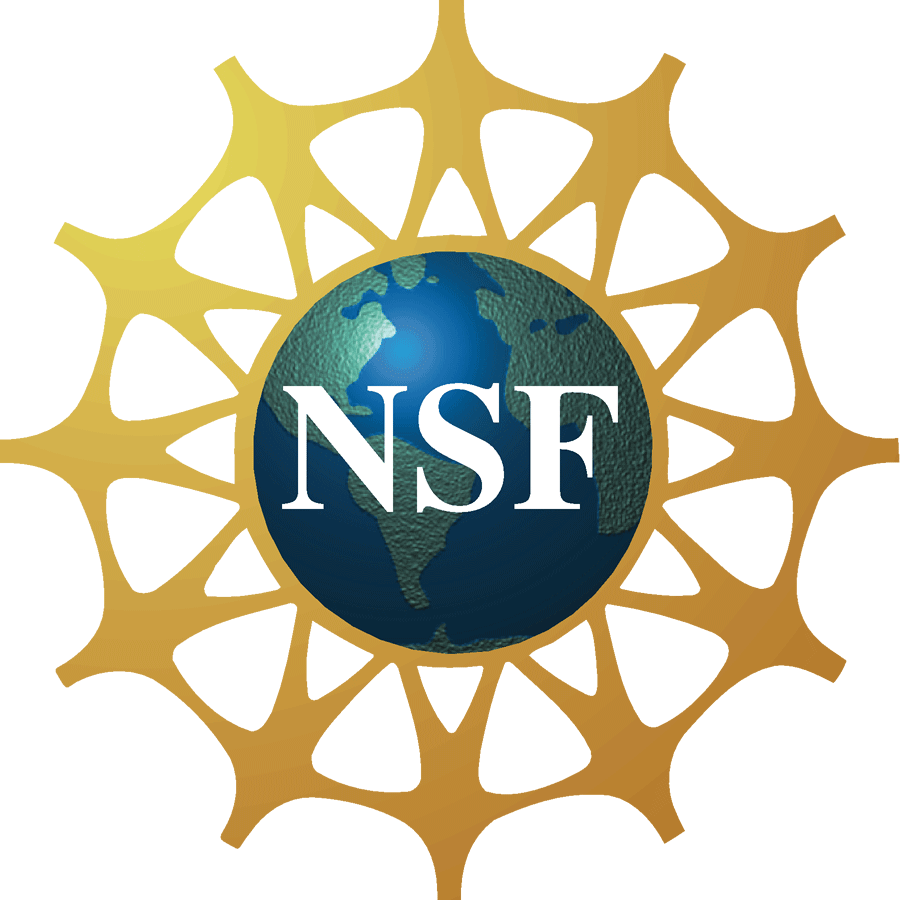Professional Responsibility Links
A Russian Missile Creates Enough Space Junk to Pose Risk to Astronauts for Years

The U.S. is condemning a "dangerous and irresponsible" test of a Russian anti-satellite missile that blasted a cloud of debris into Earth's orbit and forced astronauts aboard the International Space Station to briefly take shelter as a precaution. Russia denies that it put any spacecraft or astronauts in danger.
1. Article in NPR
2. Article in The New York Times
Humanity is waging a 'suicidal' war on nature, UN chief warns
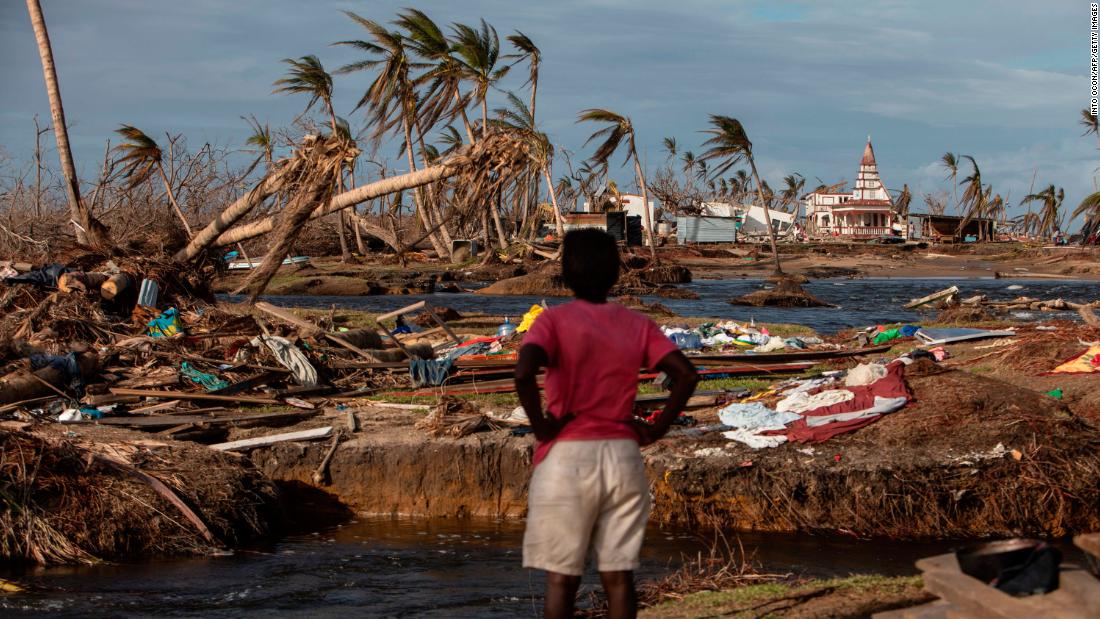
UN Secretary General Antonio Guterres issued a searing indictment of humanity's "war" on the environment Wednesday, in a speech on the state of the planet in which he urged everyone to prioritize "making peace with nature. "We are facing a devastating pandemic, new heights of global heating, new lows of ecological degradation and new setbacks in our work towards global goals for more equitable, inclusive and sustainable development," Guterres said in the address, delivered at Columbia University in New York. Read more...
Science and Engineering Report Shows Continued Loss of U.S. Dominance

The United States has continued to fall from its position as the uncontested world leader in science and engineering, according to a federal report on scientific investment and education released Wednesday. The National Center for Science and Engineering Statistics, a federal statistical agency within the National Science Foundation, took the pulse of American science by compiling research expenditures, journal articles, the scientific workforce and education data. The NSF submits this state-of-the-science report to Congress every two years. Read more...
Ethical Research — the Long and Bumpy Road from Shirked to Shared
Link recommended by Andrews Nartey
In the autumn of 1869, Charles Darwin was hard at work revising the fifth edition of On The Origin of Species and drafting his next book, The Descent of Man, to be published in 1871. As he finished chapters, Darwin sent them to his daughter, Henrietta, to edit — hoping she could help to head off the hostile responses to his debut, including objections to the implication that morality and ethics could have no basis in nature, because nature had no purpose. Read more...
CRISPR-Cas9: a world first?
Link recommended by Xiao Lin
On Nov 26, when the world heard the claims that the first genetically edited children had been born, the reaction was one of deep and profound shock. He Jiankui announced on the eve of the Second International Summit on Human Genome Editing in Hong Kong that the CRISPR-Cas9 gene editing technique had been used to edit the genome of twin girls born earlier that month in China. It seemed that the world had changed weeks ago and we were just catching up. Read more...
Abortion Bans Based on So-Called “Science” Are Fraudulent
Link recommended by Emeka Mpanugo
We are scientists, and we believe that evidence, not ideology, should inform health care decisions. The wave of anti-abortion laws across the U.S. is the latest in a long string of attempts to falsely use the language and authority of science to justify denying people their basic human rights and inflict lasting harm. Although abortion is still legal in every state, recent legislation in Alabama, Georgia, Kentucky, Louisiana, Mississippi, Missouri and Ohio threatens the future of abortion rights in the country. Scientists should, first and foremost, value evidence, and the evidence is clear: abortion bans cause harm. They make abortions less safe and especially harm historically marginalized communities. Read more...
Physicians’ Social Responsibility
Link recommended by Momin Hussain
Providing medical care for a child who is injured in an auto accident treats the child; advocating for laws that require effective car seats prevents children from being injured in the majority of car accidents. It’s safe to say that providing medical care to patients is a service to individuals, but it is public advocacy that impacts the larger determinants of health. Is advocacy, therefore, a role that physicians are professionally obligated to undertake? Some of the answer comes from the question, what causes disease? Provision of medical care alone does not address all the causes of poor health; hence physicians, whose task is to promote health, must go beyond medical treatment for individuals, advocating for improvement in the broader conditions that affect health. Read more...
Our Bodies in the Trolley’s Path, or Why Self-driving Cars Must *Not* Be Programmed to Kill
Link recommended by Augustine Nyarko
The discourse around self-driving cars has been dominated by an emphasis on their potential to reduce the number of accidents. At the same time, proponents acknowledge that self-driving cars would inevitably be involved in fatal accidents where moral algorithms would decide the fate of those involved. This is a necessary trade-off, proponents suggest, in order to reap the benefits of this new technology. In this article, I engage this argument, demonstrating how an undue optimism and enthusiasm about this technology is obscuring our ability to see what is at stake and explaining how moving beyond the dominant utilitarian framings around this technology opens up a space for both ethical inquiry and innovative design. I suggest that a genuine caring concern for the many lives lost in car accidents now and in the future—a concern that transcends false binary trade-offs and that recognizes the systemic biases and power structures that make certain groups more vulnerable than others—could serve as a starting point to rethink mobility, as it connects to the design of our cities, the well-being of our communities, and the future of our planet. Read more...
The Ethical Frontiers of Robotics
Link recommended by Tai Nguyen
Roobots have been used in laboratories and factories for many years, but their uses are changing fast. Since the turn of the century, sales of professional and personal service robots have risen sharply and are estimated to total ∼5.5 million in 2008. This number, which far outstrips the 1 million operational industrial robots on the planet, is estimated to reach 11.5 million by 2011 (1). Service robots are good at dull, dangerous, and dirty work, such as cleaning sewers or windows and performing domestic duties in the home. They harvest fruit, pump gasoline, assist doctors and surgeons, dispose of bombs, and even entertain us. Yet the use of service robots poses unanticipated risks and ethical problems. Two main areas of potential ethical risk are considered here: the care of children and the elderly, and the development of autonomous robot weapons by the military. Read more...
Medical Responsibility as Moral and Ethical Foundation for the Professional Conduit
Link recommended by Momin Hussain
The diversity of the contemporary medical act and the complexity of the doctor-patient relationship require, due to their position in the centre of healthcare services, a profound and exhaustive analysis in several domains of the medical practice, from the point of view of professional responsibility. Thus, the unification and shaping, in accordance with the principles of ethics, of the information from the field of medical education, social environment and health policies will create common points of view which will enable the visualization and design of solutions for public health issues. This paper aims for a unified approach on certain key aspects of medical professional responsibility, represented by competence, conscientiousness, prudence and devotion, investigated from the point of view of ethical principles and associated moral values, beyond the standards of clinical practice. Read more...
Self-driving car dilemmas reveal that moral choices are not universal
Link recommended by Natalia Paz & Krish Prahalad
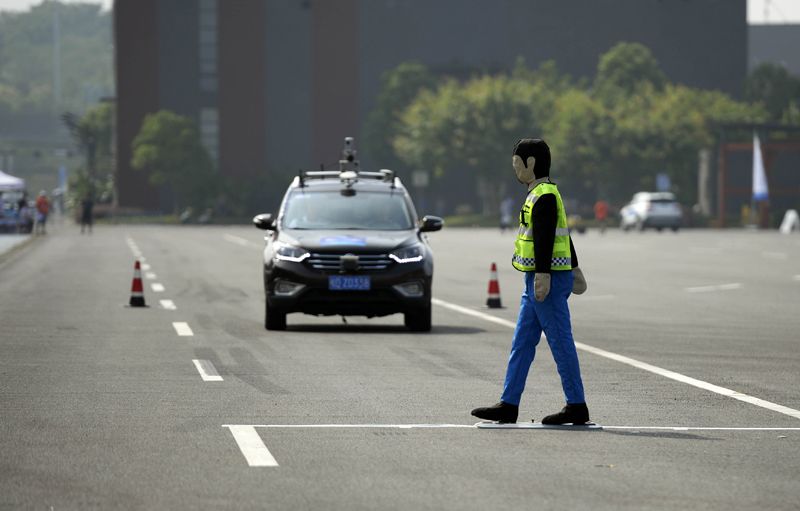
When a driver slams on the brakes to avoid hitting a pedestrian crossing the road illegally, she is making a moral decision that shifts risk from the pedestrian to the people in the car. Self-driving cars might soon have to make such ethical judgments on their own — but settling on a universal moral code for the vehicles could be a thorny task, suggests a survey of 2.3 million people from around the world. Read more...
Should Genetic Testing for Variants Associated with Influenza Infection Be Mandatory for Health Care Employees?
Link recommended by Momin Hussain
Scientists are beginning to understand more about the role of host genetics in individuals’ responses to influenza virus exposure. This fictional case addresses a situation in which a health care organization proposes requiring all health care practitioners with direct patient care responsibilities to undergo mandatory genetic testing for genetic variants used to (1) predict individuals’ responses to the influenza vaccine, (2) determine individual susceptibility to influenza infection, and (3) identify individuals at increased risk for severe disease. This commentary will discuss ethical and legal issues associated with use of genetic test results to determine employee work assignments during an influenza pandemic. Read more...
Voluntary Participation in Forensic DNA Databases
Link recommended by Tai Nguyen
The public’s understanding of forensic DNA databases remains undertheorized and few empirical studies have been produced. This article aims to address this omission by exploring the answers to an open-ended question taken from an online questionnaire regarding the reasons for individuals’ voluntarily accepting or refusing to allow their DNA profile to be included in the Portuguese forensic DNA database. The analysis is undertaken from the perspective of biological citizenship and the simultaneous empowering and disempowering effects of surveillance. The results indicate a pragmatic ethical framework that is linked to the cultural and emotional elements of altruism, resistance, stigma, and social representations of what is beneficial or harmful to the individual and to society. These subjectivities are anchored in commonplace images and metaphors for genetics, DNA, and forensic science that circulate in the messages transmitted by the media which pervade everyday life; hierarchies of trust in science and the justice system; and moral categories associated with the individual self-judgment in relation to crime, surveillance, and social order. Read more...
France bans smartphones from schools

French children will have to leave their smartphones and smart devices at home or switched off when they are at school starting in September. The ban on smartphones as well as other kinds of internet-connected devices, such as tablets, applies to schoolchildren between 3 and 15 years of age, and was passed by lawmakers on Monday. French high schools, or lycées, with students 15 and older, will get to choose whether to adopt the phone ban for their pupils. "We know today that there is a phenomenon of screen addiction, the phenomenon of bad mobile phone use... Our main role is to protect children and adolescents. It is a fundamental role of education, and this law allows it," said Education Minister Jean-Michel Blanquer on French news channel BFMTV.
1. Article in CNN
2. Article in The Wall Street Journal
Controversial research: Good science bad science
Link recommended by Haley Nicole Smith
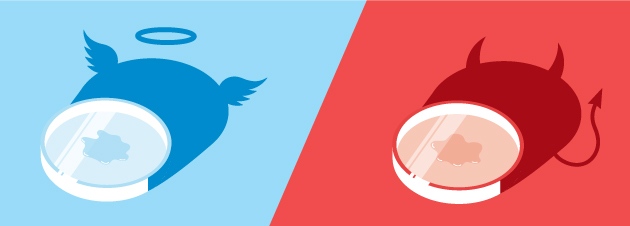
It sounds like a great idea: experimentally mutate a rare but deadly virus so that scientists can do a better job of recognizing dangerous emerging strains. But it also sounds like a terrible idea — the studies could create a virus that is easier to transmit and produce findings that are useful to bioterrorists. Last year's news that two research teams had done exactly that with the H5N1 bird flu virus was enough to spread fear around the globe and prompt a temporary moratorium on the work. A US biosecurity panel has since lifted its restrictions on publication of the teams' findings in Nature and Science, arguing that the work has clear potential benefits, that the modified virus seems to be less lethal than the original and that the data are already circulating in the community. But the episode has highlighted how thin the line can be between research that's a blessing and research that's a threat. Read more...
SMOKE SCREEN - Big Vape is copying Big Tobacco’s playbook
Link recommended by Srujana Lam
:format(webp)/cdn.vox-cdn.com/uploads/chorus_image/image/57629079/acastro_171013_2138_0001.0.jpg)
Samir Soneji had no idea what he was getting into when he agreed to talk about the potential risks of vaping at the first US E-Cigarette Summit in Washington, DC this past May. His first clue was the booing. As a professor at the Dartmouth Institute for Health Policy and Clinical Practice, Soneji studies how gaps in tobacco regulation affect health. Two years before the conference, he’d reported in JAMA Pediatrics that young people who smoke hookah or use “snus,” a form of moist smokeless tobacco, are twice as likely to try cigarettes as kids who don’t. He suspected that e-cigarettes, with kid-friendly flavors like “Cinnamon Roll” and “Peanut Butter Cup,” carried a similar risk. And that’s exactly what he and several colleagues discovered in a recent review of studies that tested that possibility. Read more...
Skin Cancers Rise, Along With Questionable Treatments
Link recommended by Daniela Melendez

John Dalman had been in the waiting room at a Loxahatchee, Fla., dermatology clinic for less than 15 minutes when he turned to his wife and told her they needed to leave. Now. “It was like a fight or flight impulse,” he said. His face numbed for skin-cancer surgery, Mr. Dalman, 69, sat surrounded by a half-dozen other patients with bandages on their faces, scalps, necks, arms and legs. At a previous visit, a young physician assistant had taken 10 skin biopsies, which showed slow growing, nonlethal cancerous lesions. Expecting to have the lesions simply scraped off at the next visit, he had instead been told he needed surgery on many of them, as well as a full course of radiation lasting many weeks. Read more...
Drugmaker's ties to nonprofits pose 'conflict of interest'
Link recommended by Sakhitha Chowdary Kanyadhara
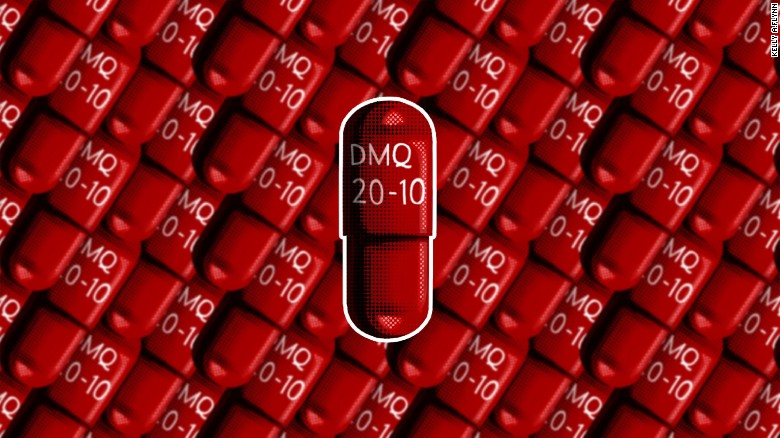
A leading advocacy group for Alzheimer's patients has stopped accepting funding from a Southern California drugmaker following a CNN investigation into the company that sparked a government probe. The CNN report on Avanir Pharmaceuticals showed that its drug Nuedexta has not been extensively studied among the elderly and may be unnecessary or even unsafe for them. Nuedexta, which treats a rare laughing and crying disorder known as pseudobulbar affect, or PBA, is not approved to treat dementia patients unless they also suffer from PBA. Yet Avanir's financial success has been heavily reliant on elderly patients in long-term care facilities, where experts say PBA is uncommon. Read more...
The FDA Needs More Power to Regulate Toxic Chemicals in Cosmetics
Link recommended by Madeleine Lu

Earlier this year a group of more than a dozen health advocacy groups and individuals petitioned the U.S. Food and Drug Administration to ban lead acetate from hair dyes. The compound, a suspected neurotoxin, is found in many hair products—Grecian Formula, for example. Lead acetate has been outlawed for nearly a decade in Canada and Europe. Studies show it is readily absorbed through the skin and can cause toxic levels of lead to accumulate in the blood. How is it possible that this chemical is still being sold to U.S. consumers in cosmetic products? The main reason is that petitions such as the one calling out lead acetate are one of the few ways, under current law, that the agency charged with ensuring food, drug and cosmetic safety can even start to limit dangerous chemicals used on our faces and in our bodies. We need to do better. Read more...
The deadly business of an unregulated global stem cell industry
Link recommended by Daniela Melendez
In 2016, the Office of the State Coroner of New South Wales released its report into the death of an Australian woman, Sheila Drysdale, who had died from complications of an autologous stem cell procedure at a Sydney clinic. In this report, we argue that Mrs Drysdale’s death was avoidable, and it was the result of a pernicious global problem of an industry exploiting regulatory systems to sell unproven and unjustified interventions with stem cells Read more...
Maximize the impacts of space science
Link recommended by Vibhu Sharma

Ever more countries are doing scientific research in space, or want to. In the past decade, China and India have joined the seasoned players — Russia, the United States, Europe and Japan1,2,3. And Turkey, South Korea, Saudi Arabia and the United Arab Emirates have expressed interest in joining space-science and deep-space missions. Since 2007, China has launched two lunar orbiters and a lander. In 2019, it plans to send another that will bring Moon rocks back to Earth. In 2014, India’s Mars Orbiter Mission reached the red planet. In five years’ time, the Chinese Academy of Sciences and the European Space Agency (ESA) will jointly launch the Solar wind Magnetosphere Ionosphere Link Explorer (SMILE) to study interactions between Earth’s magnetosphere and the solar wind. Read more...
How many organs should one patient receive? the ethics of transplantation in the medical school
Link recommended by Mustapha Ahmed Kaddar
Interest in the humanities in the medical school is growing; while several medical schools, mainly of Anglo-Saxon background, have developed dedicated courses, the experience in Italy is limited. Since the academic year 2000 to 2001, a discussion of ethical problems was implemented in the nephrology course (fourth year of the Medical School of Torino, Italy; overall 6 years). In 2002 to 2003, a case entitled “Retransplantation of Multiple Organs (Prog Transplant 2002)” was discussed in 2 hours of small-group tutorial teaching: a boy received a renal graft at age 5, failed at age 7 due to recurrent glomerulonephritis, required a heart-kidney graft at age 11, and a second heart-kidney graft at 17. Student opinions were gathered by anonymous semistructured questionnaires at the beginning of the lessons as a basis for discussion. Read more...
Delhi pollution crisis prompts city-wide emergency measures

The Delhi government is scrambling to introduce a series of city-wide emergency measures, as the capital braces for yet another day of heavy pollution. The severity of the pollution has led city chiefs to implement a total ban on trucks entering the capital, as well as temporarily suspend all civil construction projects. On Wednesday, they took the highly unusual step of closing all schools. Air quality readings in India's capital have soared since Tuesday, with one monitor showing levels in the city were 969 -- the World Health Organization considers anything above 25 to be unsafe.
1. Article in CNN
2. Article in CBSN
Privacy concerns prompt protests in California

Public-sector employees across California have camped out in the tens of thousands to protest the state’s new law requiring SAFE (Secure Assessment for Employment) screenings at all government workplaces. The screenings use a machine-learning algorithm developed by Brazil-based NeuroExpose to visually assess an employee’s cognitive competence and level of stress on arriving at work (see figure 1). “Our technology is efficient, accurate, and discreet,” says NeuroExpose spokesperson Julia Krieger. “The assessment process is no more invasive than walking through an airport scanner. And the data collected are automatically encrypted and secured.” Governor Javier Powers, who fought for years to push the new law through, notes, “The screenings will save lives. This is about keeping workplaces safe from those who seek to cause harm.” Read more ...
Programmers are having a huge discussion about the unethical and illegal things they’ve been asked to do
Earlier this week, a post written by programmer and teacher Bill Sourour went viral. It's called "Code I’m Still Ashamed Of." In it he recounts a horrible story of being a young programmer who landed a job building a website for a pharmaceutical company. The whole post is worth a read, but the upshot is he was duped into helping the company skirt drug advertising laws in order to persuade young women to take a particular drug.
He later found out the drug was known to worsen depression and at least one young woman committed suicide while taking it. He found out his sister was taking the drug and warned her off it. Decades later, he still feels guilty about it, he told Business Insider. And he was inspired to write the post after he viewed a talk by Robert Martin, called "The Future of Programming." Martin is a famous-in-his-world programmer and speaker better known as "Uncle Bob." Read more ...
The DSM, Big Pharma, and Clinical Practice Guidelines: Protecting Patient Autonomy and Informed Consent
 Link recommended by Sahar Anjum
Link recommended by Sahar AnjumThe author of this paper discusses why the issue of financial conflicts of interest (FCOI) in psychiatry has important public health implications for women and why FCOI complicate the informed consent process. For example, when psychiatric diagnostic and treatment guidelines are unduly influenced by industry, informed consent becomes a critical issue, because women may be assigned diagnostic labels that are not valid and may also be receiving imbalanced or even inaccurate information about their mental health treatment options. However, mere disclosure of industry relationships is an insufficient solution. Following Ells (2003), the author offers a more robust account of autonomy, inspired by Foucault, to strengthen informed consent practices. In addition to addressing power relations, this Foucauldian account of autonomy emphasizes the relational and dialogical aspect of the physician–patient relationship. Read more ...
How Lead Ended Up In Flint’s Tap Water
 Link recommended by Audrey Lees
Link recommended by Audrey LeesWhen Virginia Tech researchers tested the water in LeeAnne Walters’s home in Flint, Mich., this past summer, one sample had lead levels that reached a staggering 13,200 parts per billion. That’s almost 900 times as high as the 15-ppb regulatory limit set by the Environmental Protection Agency. When lead levels exceed that threshold, water utilities must act to reduce concentrations of the toxic element. “What was so scary about LeeAnne’s house was not one sample,” says Marc A. Edwards, the Virginia Tech environmental engineer who led the team. “We took 30 samples over 20 minutes, and the average was over 2,000 ppb. And even after 20 minutes of flushing, it never got below 300 ppb.” Read more ...
Solar Farms Threaten Birds
 Link recommended by Rebecca K Keim
Link recommended by Rebecca K KeimYou might never have seen an Yuma clapper rail. Fewer than 1,000 are thought to still be sloshing about in cattail-thick marshes from Mexico up to Utah and across to California. But if you were lucky enough to spot one, you might chuckle at its oversized toes. When officials with the National Fish and Wildlife Forensics Laboratory saw one of these endangered birds last year, it was no laughing matter. It was dead. It was one of 233 birds recovered from the sites of three Californian desert solar power plants as part of a federal investigation. The laboratory’s wildlife equivalents of CSI stars concluded that many of the birds had been fatally singed, broken, or otherwise fatally crippled by the facilities. Read more ...
Stephen Hawking just gave humanity a due date for finding another planet
 Link recommended by Rahim Jiwani
Link recommended by Rahim JiwaniIf humanity survives the rise of artificial intelligence, the ravages of climate change and the threat of nuclear terrorism in the next century, it doesn't mean we're home free, according to Stephen Hawking. The renowned theoretical physicist has gone as far as providing humanity with a deadline for finding another planet to colonize: We have 1,000 years. Remaining on Earth any longer, Hawking believes, places humanity at great risk of encountering another mass extinction. “We must ... continue to go into space for the future of humanity,” the 74-year-old Cambridge professor said during a speech Tuesday at Oxford University Union, according to the Daily Express. Read more ...
The Pentagon’s ‘Terminator Conundrum’: Robots That Could Kill on Their Own
 Link recommended by Lilly Schaffer
Link recommended by Lilly SchafferThe small drone, with its six whirring rotors, swept past the replica of a Middle Eastern village and closed in on a mosque-like structure, its camera scanning for targets. No humans were remotely piloting the drone, which was nothing more than a machine that could be bought on Amazon. But armed with advanced artificial intelligence software, it had been transformed into a robot that could find and identify the half-dozen men carrying replicas of AK-47s around the village and pretending to be insurgents. Read more ...
Kidney Thefts Shock India
 Link recommended by Hanieh Mirhajianmoghadam
Link recommended by Hanieh MirhajianmoghadamAs the anesthetic wore off, Naseem Mohammed said, he felt an acute pain in the lower left side of his abdomen. Fighting drowsiness, he fumbled beneath the unfamiliar folds of a green medical gown and traced his fingers over a bandage attached with surgical tape. An armed guard by the door told him that his kidney had been removed. Mr. Mohammed was the last of about 500 Indians whose kidneys were removed by a team of doctors running an illegal transplant operation, supplying kidneys to rich Indians and foreigners, police officials said. A few hours after his operation last Thursday, the police raided the clinic and moved him to a government hospital. Read more ...
Just How ‘Smart’ Do You Want Your Blender to Be?
In the land rush to digitize the world, the home is the new frontier. Over the past few years, practically every household item within reach has been technologically upgraded and rendered “smart”: toothbrushes, cutlery, baby monitors, refrigerators, thermostats, slow cookers, sprinkler systems, sex toys, even the locks in doors. Before they achieved enlightenment, they could perform only their rote, mechanical duties; now they can do so while connected to the internet. In the case of the telephone, this has been nothing short of revolutionary, but no other “smart” object has managed to replicate its success. The absurdity of the phenomenon was made unavoidably apparent in May, when a start-up unveiled a “smart tampon,” called my.Flow. If women wear the my.Flow and the sensor that attaches to the tampon by a string (and clips neatly onto your waistband) and use the my.Flow app, they could now, at last, track their periods’ duration and flow. Read more ...
Genetic testing fumbles, revealing ‘dark side’ of precision medicine
Enthusiasm for precision medicine, from the White House down to everyday physicians, is at an all-time high. But serious problems with the databases used to interpret patients’ genetic profiles can lead to “inappropriate treatment” with “devastating consequences,” researchers at the Mayo Clinic warned on Monday.
1. Article in STAT
2. Article in CNN
World's food and energy systems key to tackling global biodiversity decline
Global wildlife could plunge to a 67 per cent level of decline in just the fifty-year period ending this decade as a result of human activities, according to WWF’s Living Planet Report 2016. The report shows how people are overpowering the planet for the first time in Earth’s history and highlights the changes needed in the way society is fed and fuelled. According to the report, global populations of fish, birds, mammals, amphibians and reptiles have already declined by 58 per cent between 1970 and 2012, the most recent year with available data. This places the world on a trajectory of a potential two-thirds decline within a span of the half-century ending in 2020.
1. Article in WWF
2. Article in CNN
What Will Work: Fighting Climate Change with Renewable Energy, Not Nuclear Power
This book uses market data, scientific studies, and ethical analyses to show why we should pursue green energy and conservation, and not nuclear fission, to address global climate change. It also uncovers why the many problems with atomic power, and the many benefits of green energy and conservation, have been concealed from the public. Chapter 1 reveals how flawed science, poor ethics, short-term thinking, and special-interest influence have contributed to poor energy policies; to the failure to address climate change; and to subsidizing market failures, like nuclear energy. The chapter explains the reality of human-caused global climate change, and it shows that virtually all expert-scientific analyses accept this reality. It also refutes the arguments of climate-change skeptics, who are often influenced by fossil-fuel special interests Read more ...
Bees placed on endangered species list
Many species of wild bees, butterflies and other critters that pollinate plants are shrinking toward extinction, and the world needs to do something about it before our food supply suffers, a new United Nations scientific report warns. The 20,000 or so pollinator species are key to hundreds of billions of dollars’ worth of crops each year — from fruits and vegetables to coffee and chocolate. Yet two out of five species of invertebrate pollinators, such as bees and butterflies, are on the path toward extinction, said the first-of-its-kind report. Pollinators with backbones, such as hummingbirds and bats, are only slightly better off, with one in six species facing extinction.
1. Article in Columbia Daily Tribune
2. Article in CNN
France becomes first country to ban plastic cups and plates
France has become the first country in the world to ban disposable plastic cups and plates. A new French law will require all disposable tableware to be made from 50% biologically-sourced materials that can be composted at home by January of 2020. That number will rise to 60% by January of 2025. The measure is an addition to France's "Energy Transition for Green Growth Act," a wide-reaching law adopted last year with the aim of mitigating the impact of climate change. Read more ...
Stephen Hawking, 375 scientists slam Trump for backing 'Parexit'
A group of 375 "concerned" scientists -- including famed physicist Stephen Hawking -- released an open letter Tuesday sharply criticizing Donald Trump, citing the threat of climate change and blasting his push for the US to leave the Paris Accord. "It is of great concern that the Republican nominee for President has advocated U.S. withdrawal from the Paris Accord. A 'Parexit' would send a clear signal to the rest of the world: 'The United States does not care about the global problems of human-caused climate change. You are on your own,'" the group wrote on the website. Read more ...
The Fifty-Nine-Story Crisis
What is an engineer's worst nightmare? To realise that the supports he designed for a skyscraper like Citicorp Center are flawed - and hurricane season is approaching. Read more ...
Federal Jury Hands Down Rare Conviction For Coal Executive
 Link recommended by Patrick Mullarkey
Link recommended by Patrick MullarkeyA federal jury has convicted former Massy Energy CEO Don Blankenship for conspiring to willfully violate mine safety standards at the Upper Big Branch mine, site of a 2010 explosion that killed 29 people. The misdemeanor charge carries a sentence of up to one year in prison. He was acquitted of two more serious charges involving securities fraud and making false statements.
ROBERT SIEGEL, HOST:
In West Virginia, a federal jury has convicted former Massy Energy CEO Don Blankenship of conspiring to willfully violate federal mine safety laws. The case concerned the Upper Big Branch mine. In 2010, an explosion there killed 29 miners. Convictions like this are rare among top coal executives. From West Virginia Public Broadcasting, Ashton Marra has more.
ASHTON MARRA, BYLINE:
Dozens of West Virginians gathered outside the Charleston courthouse awaiting the verdict - guilty on one misdemeanor charge, not guilty on two felony counts.
Read more ...
COP21: Hundreds of fake adverts expose 'hypocrisy' of Paris climate change talks
 Link recommended by Mythri Pullela
Link recommended by Mythri Pullela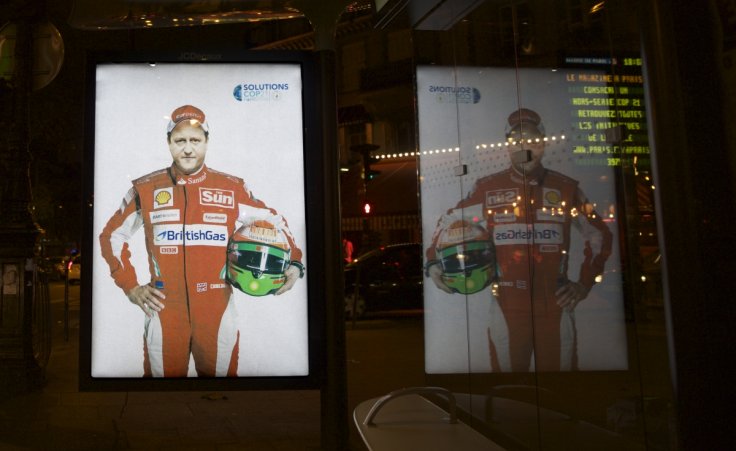
More than 600 fake adverts have been displayed across Paris in a bid to expose the "corporate takeover" of the COP21 climate talks that began on 30 November. The adverts orchestrated by the UK-based campaign group Brandalism with the aim of highlighting the links between consumerism, fossil fuel dependency and climate change.
Displayed on hundreds of advertising spaces at bus stops and street corners in the French capital, the adverts feature corporate sponsors of the climate change talks, including AirFrance, Engie and Dow Chemicals. World leaders Francois Hollande, David Cameron, Barack Obama and Angela Merkel are also pictured. Read more ...
Remembering the Columbia Crew, One Day at a Time
 Link recommended by Gareth Hastings
Link recommended by Gareth Hastings
Dear Rick, Willie, Mike, KC, Dave, Laurel, and Ilan,
I can’t believe it’s been ten years since I last saw you guys. We really miss you a lot. A day doesn’t go by without thinking of you all. At first it was mostly tears, but now it’s about happier thoughts, all the good times we had. You would be amazed at how all of us pulled together after losing you all. It was hard on everyone, families and friends. We all changed forever, but I like to think that overall, it’s been in a good way. I have to confess that I feel responsible for what happened to you all. I worked a shift in Mission Control for STS-107 the week before you were coming home and learned about the foam strike and the debate about what it might mean. I should have done something. Read more ...
The Bhopal disaster and its aftermath: a review
 Link recommended by Mythri Pullela
Link recommended by Mythri PullelaOn December 3 1984, more than 40 tons of methyl isocyanate gas leaked from a pesticide plant in Bhopal, India, immediately killing at least 3,800 people and causing significant morbidity and premature death for many thousands more. The company involved in what became the worst industrial accident in history immediately tried to dissociate itself from legal responsibility. Eventually it reached a settlement with the Indian Government through mediation of that country's Supreme Court and accepted moral responsibility. It paid $470 million in compensation, a relatively small amount of based on significant underestimations of the long-term health consequences of exposure and the number of people exposed. The disaster indicated a need for enforceable international standards for environmental safety, preventative strategies to avoid similar accidents and industrial disaster preparedness.
Since the disaster, India has experienced rapid industrialization. While some positive changes in government policy and behavior of a few industries have taken place, major threats to the environment from rapid and poorly regulated industrial growth remain. Widespread environmental degradation with significant adverse human health consequences continues to occur throughout India. Read more ...
Collapse of the world’s largest herbivores
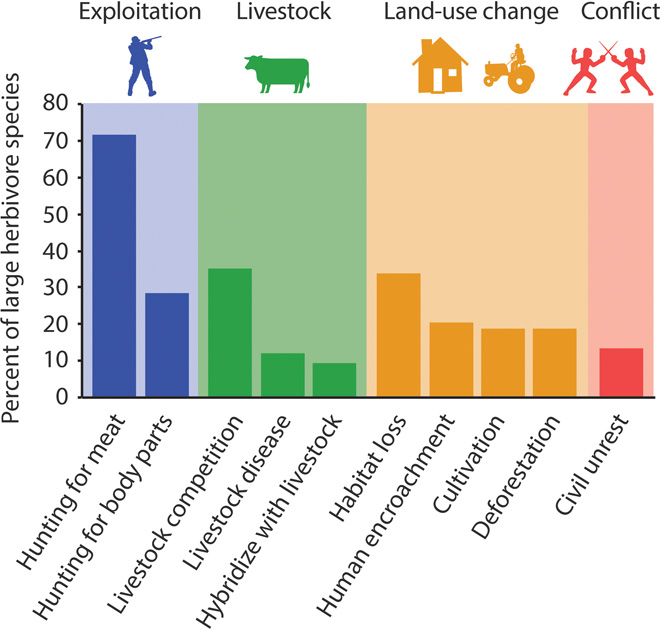
Large wild herbivores are crucial to ecosystems and human societies. We highlight the 74 largest terrestrial herbivore species on Earth (body mass ≥100 kg), the threats they face, their important and often overlooked ecosystem effects, and the conservation efforts needed to save them and their predators from extinction. Large herbivores are generally facing dramatic population declines and range contractions, such that ~60% are threatened with extinction. Nearly all threatened species are in developing countries, where major threats include hunting, land-use change, and resource depression by livestock. Loss of large herbivores can have cascading effects on other species including large carnivores, scavengers, mesoherbivores, small mammals, and ecological processes involving vegetation, hydrology, nutrient cycling, and fire regimes. The rate of large herbivore decline suggests that ever-larger swaths of the world will soon lack many of the vital ecological services these animals provide, resulting in enormous ecological and social costs. Read more ...
U.S. Maps Pinpoint Earthquakes Linked to Quest for Oil and Gas
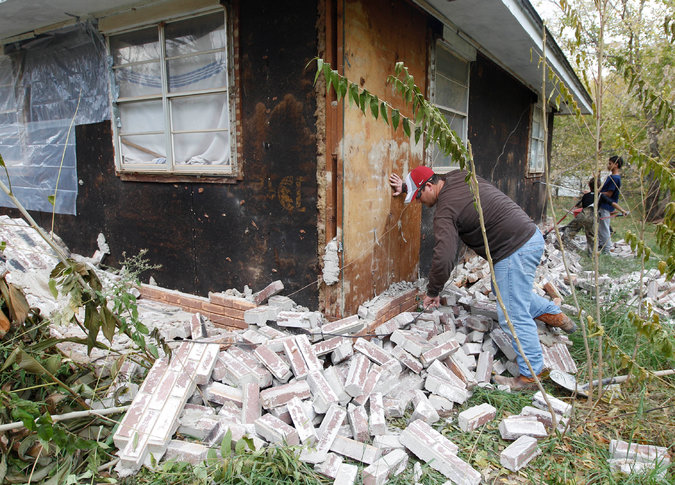
The United States Geological Survey on Thursday released its first comprehensive assessment of the link between thousands of earthquakes and oil and gas operations, identifying and mapping 17 regions where quakes have occurred.
The report was the agency’s broadest statement yet on a danger that has grown along with the nation’s energy production. Read more ...
Scientists Seek Ban on Method of Editing the Human Genome
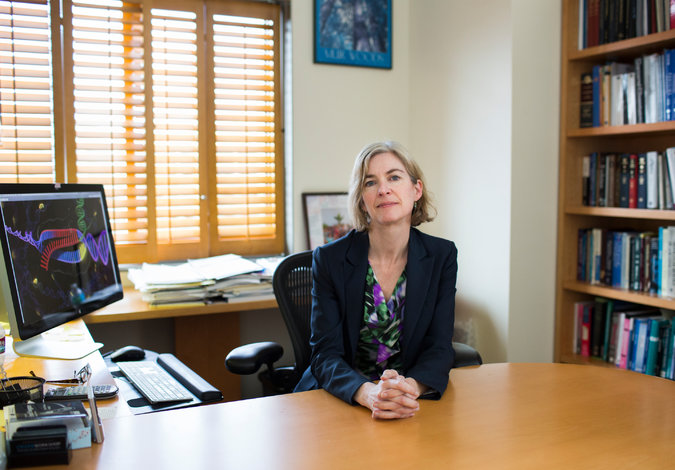
A group of leading biologists on Thursday called for a worldwide moratorium on use of a new genome-editing technique that would alter human DNA in a way that can be inherited.
The biologists fear that the new technique is so effective and easy to use that some physicians may push ahead before its safety can be assessed. They also want the public to understand the ethical issues surrounding the technique, which could be used to cure genetic diseases, but also to enhance qualities like beauty or intelligence. The latter is a path that many ethicists believe should never be taken. Read more ...
The end of privacy

At birth, your data trail began. You were given a name, your height and weight were recorded, and probably a few pictures were taken. A few years later, you were enrolled in day care, you received your first birthday party invitation, and you were recorded in a census. Today, you have a Social Security or national ID number, bank accounts and credit cards, and a smart phone that always knows where you are. Perhaps you post family pictures on Facebook; tweet about politics; and reveal your changing interests, worries, and desires in thousands of Google searches. Sometimes you share data intentionally, with friends, strangers, companies, and governments. But vast amounts of information about you are collected with only perfunctory consent—or none at all. Read more ...
Angry Turks Demand Answers After Mine Disaster
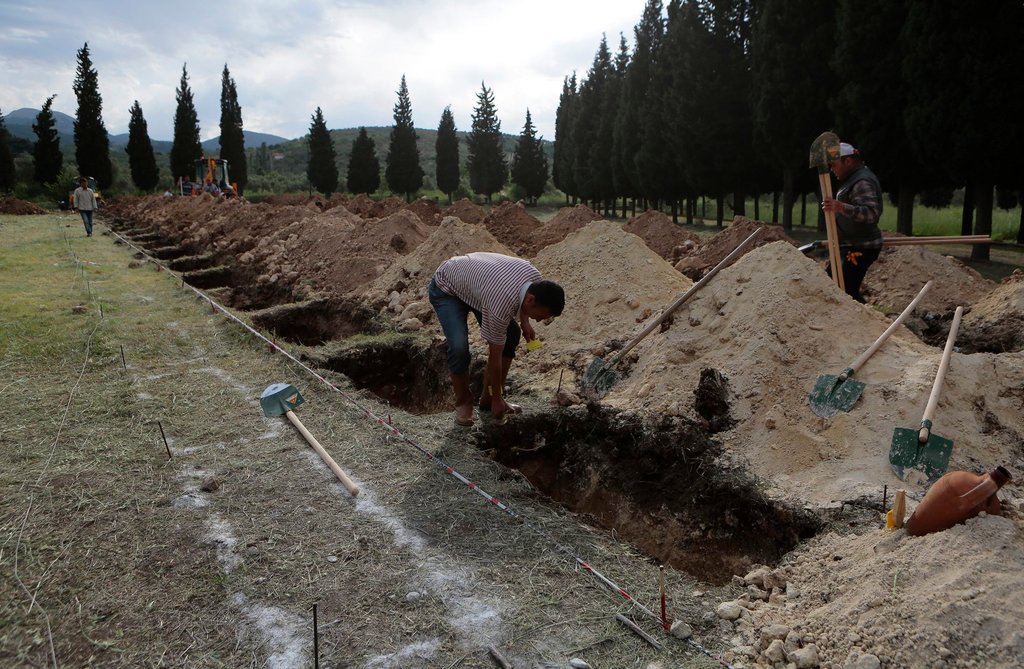
SOMA, Turkey — As hopes began to fade for hundreds of coal miners still trapped underground in a hellish explosion, antigovernment protests broke out across the country on Wednesday while victims’ families demanded answers in what is emerging as perhaps the worst industrial accident in the country’s history.
Thousands of people have gathered here in Soma, the nearest town to the mine, in hopes of getting news of relatives and friends who are unaccounted for. Their frustrations erupted in a rock-throwing protest in front of the headquarters of the Justice and Development Party of Prime Minister Recep Tayyip Erdogan that was broken up by the police in clouds of tear gas. Demonstrations also broke out in Ankara, the capital, and in Istanbul. Read more ...
West Virginia chemical spill into Elk River contaminating air and water quality
The complexities and implications of the chemical spill into West Virginia‘s Elk River keep growing, according to a new study. The lack of data motivated researchers to take on essential odor-related research that went beyond their National Science Foundation Rapid Response Research grant to better understand the properties of the chemical mixture called crude 4-methylcyclohexane methanol, the major component in the crude mix of the spilled chemicals into the Elk River. It is used in the separation and cleaning of coal products.
In the more than two months since the Jan. 9 chemical spill into West Virginia's Elk River, new findings reveal the nature of the chemicals that were released into the water and then into the air in residents' houses.
"Based on our increasing understanding of the chemicals involved in the water crisis, the complexities and implications of the spill keep growing," said Andrea Dietrich, professor of civil and environmental engineering at Virginia Tech. "People are still afraid to drink the water; odors persist in schools, residences, and businesses; data are still lacking for the properties of the mixture of chemicals in the crude MCHM that spilled." Read more ...
Scientists offered cash to dispute climate study
 Link recommended by Sophia Ewens
Link recommended by Sophia Ewens
Scientists and economists have been offered $10,000 each by a lobby group funded by one of the world's largest oil companies to undermine a major climate change report due to be published today.
Letters sent by the American Enterprise Institute (AEI), an ExxonMobil-funded thinktank with close links to the Bush administration, offered the payments for articles that emphasise the shortcomings of a report from the UN's Intergovernmental Panel on Climate Change (IPCC). Read more ...
'Worst Case' BP Ruling on Gulf Spill Means Billions More in Penalties
 Link recommended by Rachel Funk
Link recommended by Rachel Funk
BP Plc acted with gross negligence in setting off the biggest offshore oil spill in U.S. history, a federal judge ruled, handing down a long-awaited decision that may force the energy company to pay billions of dollars more for the 2010 Gulf of Mexico disaster.
U.S. District Judge Carl Barbier held a trial without a jury over who was at fault for the catastrophe, which killed 11 people and spewed oil for almost three months into waters that touch the shores of five states. Read more ...
Site Unseen
 Link recommended by Olga Bannova
Link recommended by Olga Bannova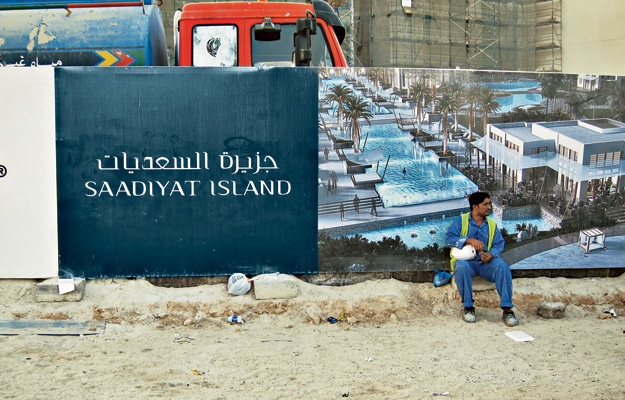
A migrant construction worker rests at the end of his shift on Saadiyat Island, where, in addition to the Guggenheim, institutions including the Louvre and New York University are building outposts.
It’s not my duty as an architect to look at it,” Zaha Hadid told The Guardian in late February. Her comment came after the news organization revealed that more than 500 Indian and 382 Nepalese workers had died in the last two years’ preparations for the 2022 FIFA World Cup in Qatar, an event for which she has designed a stadium. “I have nothing to do with the workers,” Hadid said.
Activists and the media pilloried Hadid for her aloof stance. But her comment underscores an issue that architecture firms with international practices often encounter but rarely discuss. In a global economy, as the process of making is increasingly alienated (and physically removed) from design, an architect’s duty to safeguard workers’ rights becomes perplexed. The AIA’s ethical standard on this—“Members should uphold human rights in their professional endeavors”—is not a mandatory dictum. But activists believe architects have more responsibility than professional codes dictate. Read more ...

An Architect’s Code
Link recommended by Olga Bannova
A group called Architects, Designers, and Planners for Social Responsibility (ADPSR) has taken the stance that there are some buildings that just should not have been built. Buildings that, by design, violate standards of human rights.
Specifically, this refers to prisons with execution chambers, or prisons that are designed keep people in long-term isolation (or as prison officials call it, “segregation”). The latter kind of prison is called a “supermax,” or “security housing unit” (SHU). There is no legal definition for solitary confinement, so it’s up for debate as to whether the SHU constitutes solitary confinement. Read more ...

As engineers, we must consider the ethical implications of our work
Link recommended by Lindsay Brull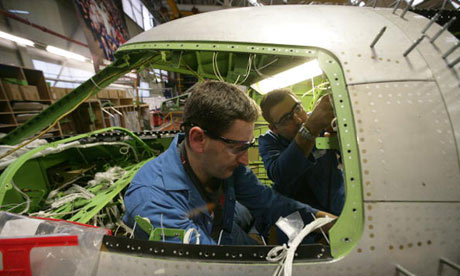 Engineering ethics are mostly technical: how to design properly, how to not cut corners, and how to serve our clients well. Photograph: Bloomberg
Engineering ethics are mostly technical: how to design properly, how to not cut corners, and how to serve our clients well. Photograph: Bloomberg
One aspect of Edward Snowden's revelations in the Guardian about the NSA's surveillance activities has received less attention than it should. The algorithms that extract highly specific information from an otherwise impenetrable amount of data have been conceived and built by flesh and blood, engineers with highly sophisticated technical knowledge. Did they know the use to which their algorithms would be put? If not, should they have been mindful of the potential for misuse? Either way, should they be held partly responsible or were they just "doing their job"? Read more ...
Diesel exhaust rapidly degrades floral odours used by honeybees
Honeybees utilise floral odours when foraging for flowers; we investigated whether diesel exhaust pollution could interrupt these floral odour stimuli. A synthetic blend of eight floral chemicals, identified from oilseed rape, was exposed to diesel exhaust pollution. Within one minute of exposure the abundances of four of the chemicals were significantly lowered, with two components rendered undetectable. Honeybees were trained to recognise the full synthetic odour mix; altering the blend, by removing the two chemicals rendered undetectable, significantly reduced the ability of the trained honeybees to recognize the altered odour. Furthermore, we found that at environmentally relevant levels the mono-nitrogen oxide (NOx) fraction of the exhaust gases was a key facilitator of this odour degradation. Such changes in recognition may impact upon a honeybee’s foraging efficiency and therefore the pollination services that they provide. Read more ...

Exemplary Ethical Conduct I’m Embarrassed I Didn’t Know About Dept.: Jonas Salk and Albert Sabin
Link recommended by Rahul Goel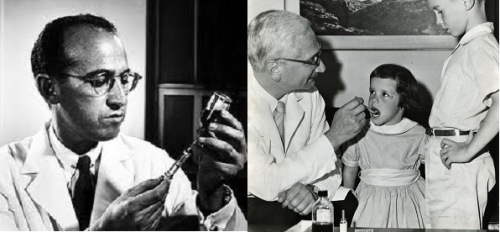 Salk and Sabin, true professionals. Did you know?
Salk and Sabin, true professionals. Did you know?
You learn the damnedest things in the damnedest places, which is a good reason to keep your ears open wherever you may be.
Last night I found myself listening to Michael Savage, easily the most offensive of all conservative talk show hosts, and he gives Rush and Mark Levine a run for their money in the ego category, too. I only listen to Savage by accident, and then only in bites of five minutes or less; it frightens me that millions of people might be influenced by such consistently hateful commentary. Read more ...

Ethical issues and sports medicine
By Nancy M. Cummings, MD, and Matthew J. Matava, MDLink recommended by Wen-Hao Chou
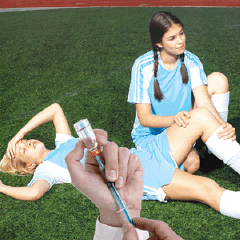
Does the Hippocratic maxim apply to the modern-day athlete?
“Do no harm” seems pretty simple. Yet, it is important to define “harm”: Is it purely physical or could it be psychological or financial?
In today’s sports medicine arena, this definition is not so clear. The traditional physician-patient relationship now has become, at the least, a triad—doctor-patient-team relationship. In some cases, the financial “health” of the patient threatens to cloud the picture. Read more ...

The ethics of nuclear power: Social experiments, intergenerational justice, and emotions
Behnam Taebi, Sabine Roeser, Ibo van de PoelLink recommended by Shyam Panthi
The Fukushima accident has brought nuclear power to the forefront of political controversy again. This controversy is particularly hard to resolve due to four specific characteristics of the risks of nuclear energy:(i) a nuclear accident has a low probability but potentially very large consequences; (ii) nuclear risk assessments are thwarted by high levels of uncertainty and even ignorance; (iii) nuclear waste remains radiotoxic for several hundred thousands of years; and (iv) nuclear technology gives rise to intense emotions by both proponents and opponents. As a consequence, traditional approaches to risk assessment no longer suffice to deal adequately with the risks of nuclear power and should be supplemented by an explicit discussion of themoral acceptability of the risks of nuclear technology. Read more ...
$168 million payout to Johnson & Johnson whistleblowers
By Gregory WallaceThe $167.7 million award is one of the largest whistleblower awards in U.S. history. It will be divided among an unspecified number of whistleblowers in three states, according to the Justice Department.
The $2.2 billion settlement between Johnson & Johnson (JNJ, Fortune 500) and authorities settles charges that J&J marketed drugs for unapproved uses and gave kickbacks to doctors and nursing homes. Attorney General Eric Holder said Johnson & Johnson and two subsidiaries "lined their pockets at the expense of American taxpayers, patients and the private insurance industry." Read more ...

Reith Lectures 2010, 1st lecture: “The Scientific Citizen”
Link recommended by Olga Datskova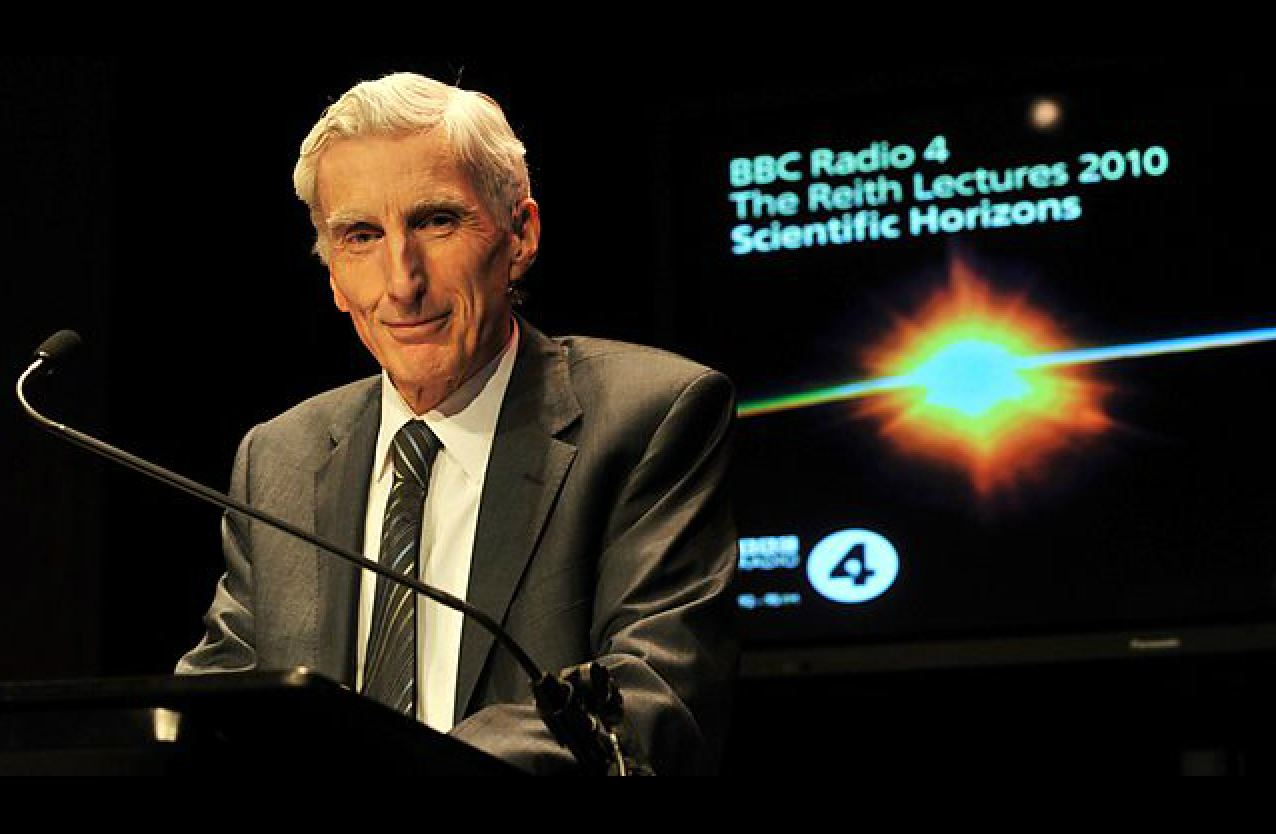
In the first of this year's Reith Lectures, entitled Scientific Horizons, Martin Rees, President of the Royal Society, Master of Trinity College and Astronomer Royal, explores the challenges facing science in the 21st century. We are increasingly turning to government and the media to explain the risks we face. But in the wake of public confusion over issues like climate change, the swine 'flu vaccine and, more recently, Iceland's volcanic ash cloud, Martin Rees calls on scientists to come forward and play a greater role in helping us understand the science that affects us all. Read more ...
U.N. climate change report points blame at humans
By Dave Hennen, Brandon Miller and Eliott C. McLaughlin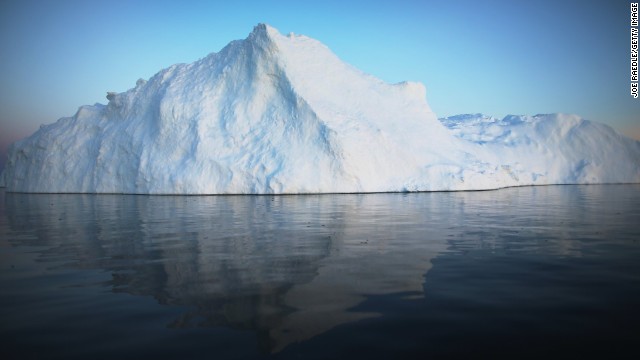
(CNN) -- The world's getting hotter, the sea's rising and there's increasing evidence neither are naturally occurring phenomena.
So says a report from the U.N. International Panel on Climate Change, a document released every six years that is considered the benchmark on the topic. More than 800 authors and 50 editors from dozens of countries took part in its creation. Read more ...
Japan to issue gravest warning since quake on Fukushima nuclear plant leaks
By Junko Ogura and Katie Hunt, CNN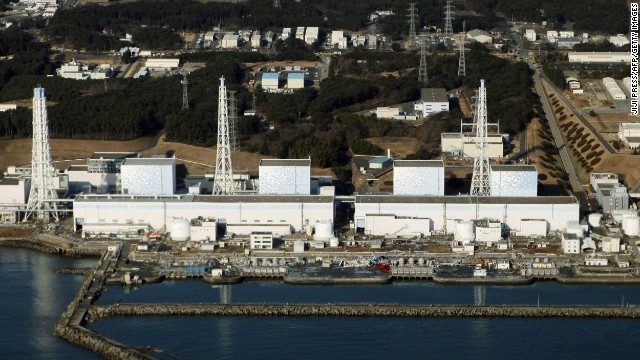
Tokyo (CNN) -- Japan is poised to declare a toxic water leak at the Fukushima nuclear plant a level 3 "serious incident," its gravest warning since the massive 2011 earthquake and tsunami that sent three reactors into meltdown. Read more ...
Hanford Nuclear Waste Cleanup Plant May Be Too Dangerous
By Valerie Brown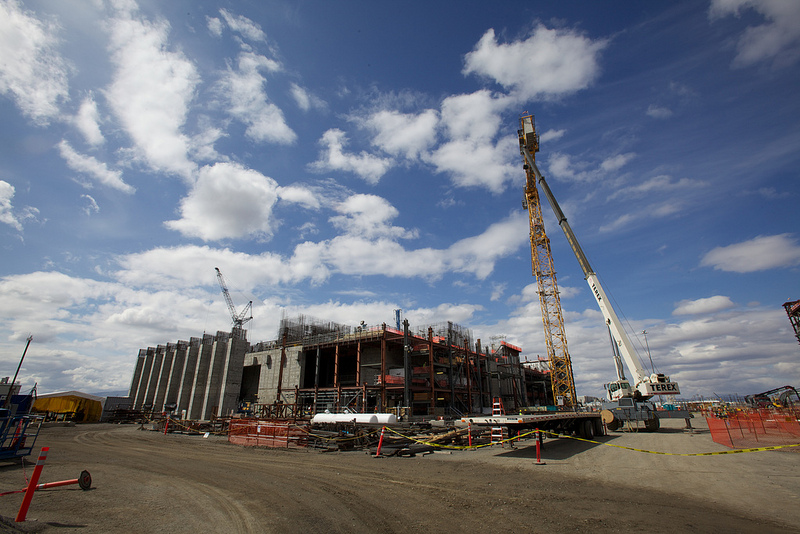
Safety issues make plans to clean up a mess left over from the construction of the U.S. nuclear arsenal uncertain. The most toxic and voluminous nuclear waste in the U.S.—208 million liters —sits in decaying underground tanks at the Hanford Site (a nuclear reservation) in southeastern Washington State. Read more ...
The Low-Level Nuclear Threat
In Rome last week, biologists from radiation-protection agencies and research institutes around the world who have taken up the challenge of low-dose radiation research met to discuss how to share contemporary information, and how to make the vast archives of historical data available to all.
1. The article in Nature
2. The article in New York Times
3. The Multidisciplinary European Low Dose Initiative
Records: Texas plant hadn't told feds about explosive fertilizer
By Matt Smith, CNNupdated 5:39 AM EDT, Fri April 26, 2013
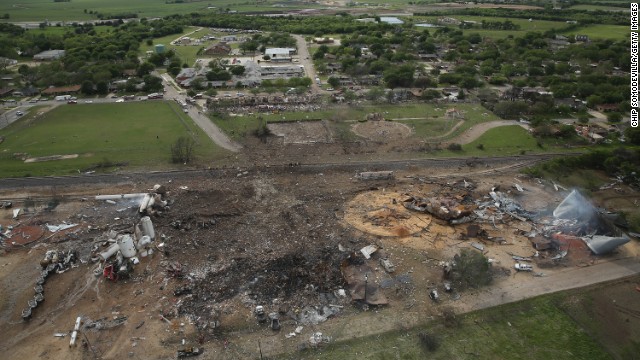
The fertilizer plant that blew up in Texas last week warned state and local officials but not federal agencies that it had 270 tons of highly volatile ammonium nitrate on site, according to regulatory records. Read more ...
Almost half of Fukushima children now have thyroid disorders from radiation poisoning, officials blame 'too much seafood'
Sunday, December 02, 2012 by: PF Louis(NaturalNews) Not much information comes out of Japan about Fukushima anymore, and the American MSM seems to have forgotten what watered down reporting they had done earlier. But the human suffering has begun in Japan, and even the Japanese government is trying to pretend it's not happening.
The curtain is pulled over the total impact of this disaster to protect the nuclear power industry. The government and media blackout has become known as "plume gate" for the radioactive plume that was released from the Fukushima mishap. Read more ...
Risk of Ischemic Heart Disease in Women after Radiotherapy for Breast Cancer
Exposure of the heart to ionizing radiation during radiotherapy for breast cancer increases the subsequent rate of ischemic heart disease. The increase is proportional to the mean dose to the heart, begins within a few years after exposure, and continues for at least 20 years. Women with preexisting cardiac risk factors have greater absolute increases in risk from radiotherapy than other women. (Funded by Cancer Research UK and others.)
1. The article in The New England Journal of Medicine
2. The article in The Wall Street Journal
Underground Nuclear Tanks Leaking in Washington State
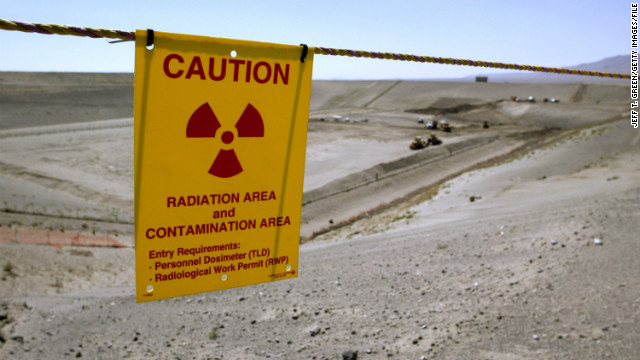
The Hanford site in southeast Washington state once played a major part in U.S. plutonium production.
Six underground tanks holding radioactive waste are leaking at the Hanford Nuclear Reservation in eastern Washington, Gov. Jay Inslee said on Friday after a meeting with federal officials overseeing the cleanup of the nation’s most polluted nuclear site.
1. The article in The New York Times
2. The article in CNN
Trial Against BP To Begin Over 2010 Rig Explosion
Some are calling it "the trial of century." In New Orleans Monday, dozens of lawyers will pack into a federal courtroom to argue over BP's civil liability from the 2010 Gulf of Mexico oil spill. Millions of barrels of oil fouled beaches from Texas to Florida. Billions of dollars are at stake.
1. The article in CNN
2. Commentary by NPR
Hard lessons for U.S. nuclear safety from Fukushima meltdown
By Daniel P. Aldrich, Special to CNNupdated 9:26 PM EDT, Thu May 24, 2012
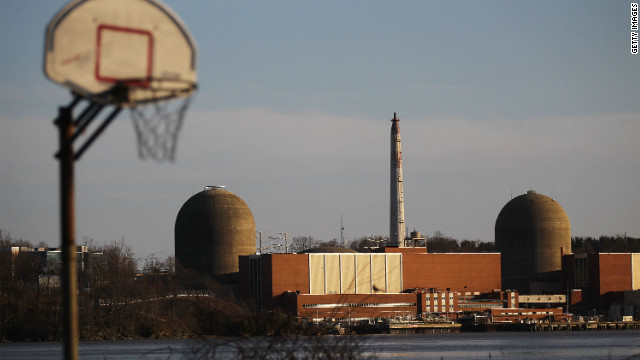
The NRC said the U.S. nuclear plant with the greatest earthquake risk is Indian Point, 24 miles north of New York City.
(CNN) -- The earthquake and tsunami in northeastern Japan on March 11 last year took an estimated 19,000 lives, caused the evacuation of about 300,000 people, and set off the worst nuclear accident since Chernobyl. The meltdowns of the Fukushima Daiichi reactors ended Japan's plans to produce half of its electricity through nuclear energy.
All of Japan's remaining reactors are offline, and experts believe that strong anti-nuclear feelings will keep them from restarting for some time. Beyond Japan's shores, the crisis has pushed Germany, Italy and Switzerland to end their commitment to nuclear power. Fukushima has given U.S. nuclear regulators four important lessons given a tendency to downplay the far-reaching consequences of disasters and outdated ways of preparing for them. Read more ...
Review of UT Fracking Study Finds Failure to Disclose Conflict of Interest (Updated)
BY TERRENCE HENRY | DECEMBER 6, 2012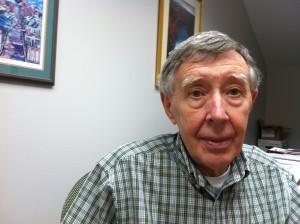
Resignation and Retirement Result
The long-awaited review of a controversial study on the drilling process known as hydraulic fracturing, or “fracking,” was released today, and it finds numerous errors and flaws with how the study was conducted and released, as well as University of Texas policies for disclosing conflicts of interest.
The head author of the study, Dr. Charles “Chip” Groat, has retired in the wake of the controversy, and the head of the Energy Institute that released it, Dr. Raymond Orbach, has resigned as head of the Institute, the University announced today. Listen to it.
Ignoring the Science on Mammograms
By DAVID H. NEWMAN, M.D.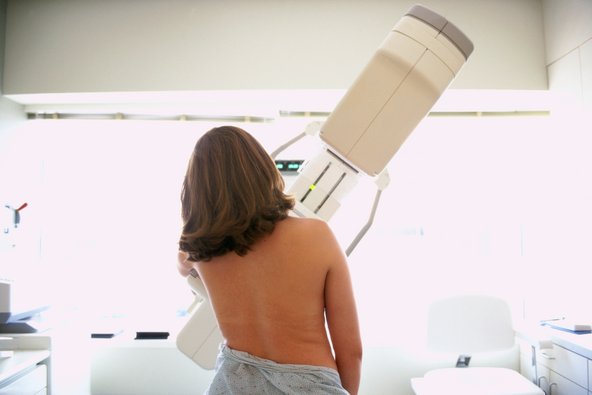
Last week The New England Journal of Medicine published a study with the potential to change both medical practice and public consciousness about mammograms. Read more...
The biological impacts of the Fukushima nuclear accident on the pale grass blue butterfly
Scientific Reports 2, Article number: 570 | doi:10.1038/srep00570Received 06 June 2012 | Accepted 24 July 2012 | Published 09 August 2012
The collapse of the Fukushima Dai-ichi Nuclear Power Plant caused a massive release of radioactive materials to the environment. A prompt and reliable system for evaluating the biological impacts of this accident on animals has not been available. Here we show that the accident caused physiological and genetic damage to the pale grass blue Zizeeria maha, a common lycaenid butterfly in Japan. We collected the first-voltine adults in the Fukushima area in May 2011, some of which showed relatively mild abnormalities. The F1 offspring from the first-voltine females showed more severe abnormalities, which were inherited by the F2 generation. Adult butterflies collected in September 2011 showed more severe abnormalities than those collected in May. Similar abnormalities were experimentally reproduced in individuals from a non-contaminated area by external and internal low-dose exposures. We conclude that artificial radionuclides from the Fukushima Nuclear Power Plant caused physiological and genetic damage to this species.
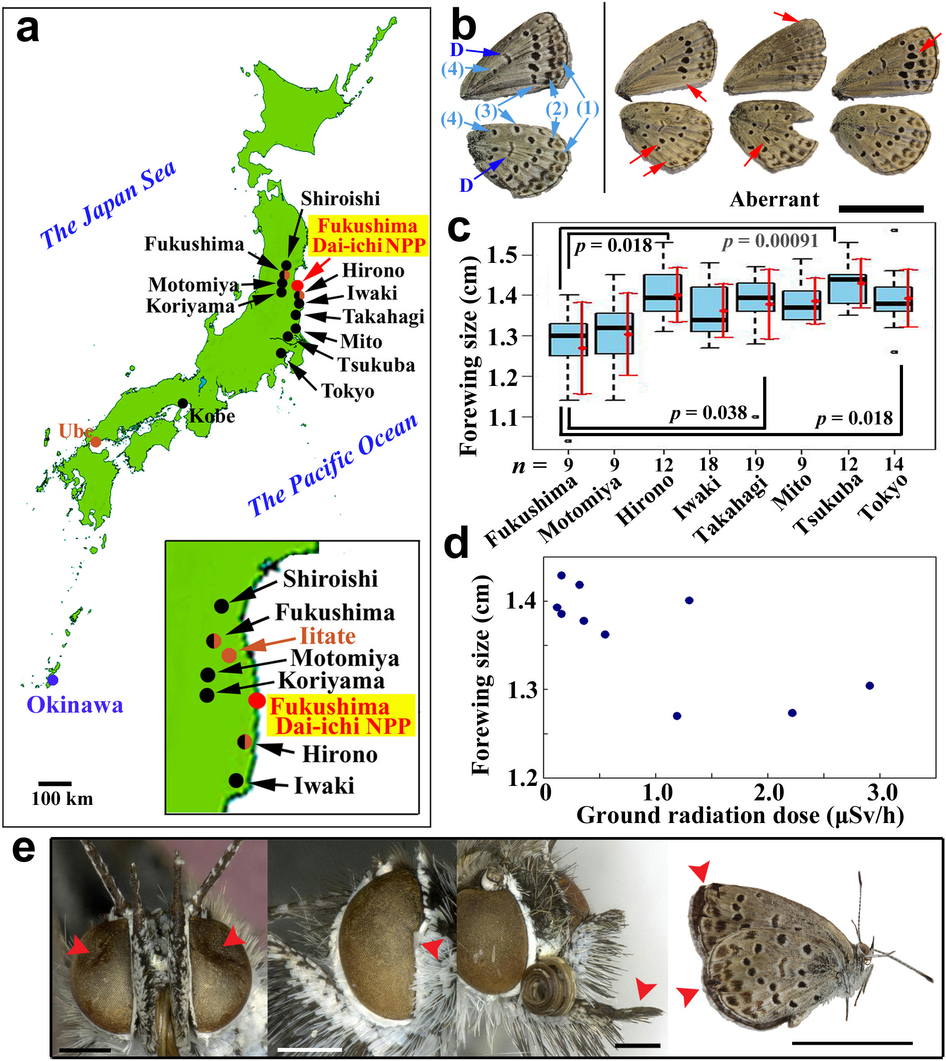 (a) Collection localities. A red dot indicates the location of the Fukushima Dai-ichi NPP. Black dots and black half dots indicate the cities from which the first-voltine adults were collected. Brown dots and brown half dots indicate cities from which the host plant leaves were collected for the internal exposure experiment. All experiments were performed in Okinawa, marked by a blue dot. Inset shows the collection localities around the NPP. (b) Representative wings with normal (leftmost) and aberrant colour patterns. Numbers 1, 2, 3, and 4 indicate the first, second, third, and fourth spot arrays, respectively, and “D” indicates the discal spot. Red arrows indicate loss, dislocation, and weak expression of spots (left individual), weak expression and dislocation of spots (middle individual), and enlargement of spots (right individual). These samples were caught in Mito except for the leftmost aberrant specimen, which was caught in Iwaki. Scale bar, 1.0 cm.
(a) Collection localities. A red dot indicates the location of the Fukushima Dai-ichi NPP. Black dots and black half dots indicate the cities from which the first-voltine adults were collected. Brown dots and brown half dots indicate cities from which the host plant leaves were collected for the internal exposure experiment. All experiments were performed in Okinawa, marked by a blue dot. Inset shows the collection localities around the NPP. (b) Representative wings with normal (leftmost) and aberrant colour patterns. Numbers 1, 2, 3, and 4 indicate the first, second, third, and fourth spot arrays, respectively, and “D” indicates the discal spot. Red arrows indicate loss, dislocation, and weak expression of spots (left individual), weak expression and dislocation of spots (middle individual), and enlargement of spots (right individual). These samples were caught in Mito except for the leftmost aberrant specimen, which was caught in Iwaki. Scale bar, 1.0 cm.
Nuclear disaster spreeads to homes, food
Fukushima's nuclear fallout spreads through ordinary life in Japan. CNN's Kyung Lah reports.
Radioactive bluefin tuna crossed the Pacific to US
By ALICIA CHANG | Associated Press – Wed, May 30, 2012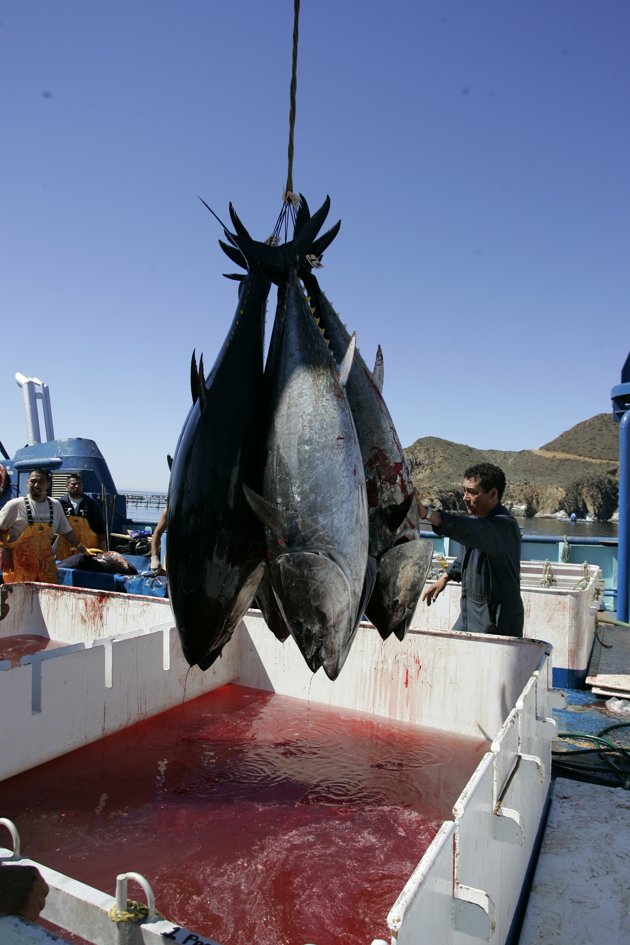
LOS ANGELES (AP) — Across the vast Pacific, the mighty bluefin tuna carried radioactive contamination that leaked from Japan's crippled nuclear plant to the shores of the United States 6,000 miles away — the first time a huge migrating fish has been shown to carry radioactivity such a distance.
"We were frankly kind of startled," said Nicholas Fisher, one of the researchers reporting the findings online Monday in the Proceedings of the National Academy of Sciences.
The levels of radioactive cesium were 10 times higher than the amount measured in tuna off the California coast in previous years. But even so, that's still far below safe-to-eat limits set by the U.S. and Japanese governments. Read more ...
CT scans for children linked to increased cancer risk
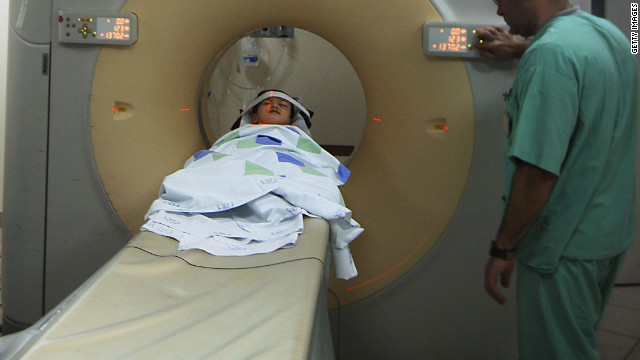 June 6th, 2012 | 06:30 PM ET
June 6th, 2012 | 06:30 PM ET
CT scans expose children to radiation that could give them cancer, according to a review of children’s imaging data published Wednesday in the British medical journal Lancet.
The researchers estimate that for every 10,000 computed tomography scans performed on children aged 10 or younger, one additional child will get a brain tumor and another additional child will get leukemia within a decade of the first scan. These cancers wouldn’t otherwise be expected, even if none of the imaging was done.
Researchers at the National Cancer Institute and Institute of Health and Society at Newcastle University in England say their investigation is the first direct evidence of such a link. They reviewed 175,000 cases.
Multiple CT scans increase a child’s risk. The researchers found radiation exposure from two to three scans can triple the risk of brain cancer and five to ten scans can triple the risk of leukemia. Read more ...
Opinion: Facebook threatens to 'Zuck up' the human race
By Andrew Keen, Special to CNN | updated 7:10 PM EDT, Wed May 30, 2012
Editor's note: Andrew Keen is a British-American entrepreneur and professional skeptic. He is the author of "The Cult of the Amateur," and "Digital Vertigo." This is the latest in a series of commentaries for CNN looking at how internet trends are influencing social culture.
(CNN) -- The news last week was all about Facebook's dodgy IPO. Investors are filing suit against Facebook about withholding "negative" assessment on its business prospects. This IPO not only "Zucked up" Silicon Valley's supposed tech bubble, but it has created the suspicion that Facebook willfully exploited the innocence of the small investor.
But something even dodgier than a potential stock market fraud is going on. The social network is taking something much more important than money from its nearly one billion members. By sabotaging what it really means to be human, Facebook is stealing the innocence of our inner lives. Read more ...

Psychology Of Fraud: Why Good People Do Bad Things
Chana Joffe-Walt and Alix Spiegel | May 1, 2012
Enron, Worldcom, Bernie Madoff, the subprime mortgage crisis.
Over the past decade or so, news stories about unethical behavior have been a regular feature on TV, a long, discouraging parade of misdeeds marching across our screens. And in the face of these scandals, psychologists and economists have been slowly reworking how they think about the cause of unethical behavior.
In general, when we think about bad behavior, we think about it being tied to character: Bad people do bad things. But that model, researchers say, is profoundly inadequate.
Which brings us to the story of Toby Groves. Listen to it.
California's dark legacy of forced sterilizations
By Elizabeth Cohen and John Bonifield, CNNupdated 1:38 PM EDT, Thu March 15, 2012
(CNN) -- Six decades ago, Charlie Follett was a teenager living in California's Sonoma State Home. As he did most days, Follett sat in a field, singing popular songs to himself, enjoying the sunshine and the solitude.
Suddenly, someone came outside to get Follett and brought him to the hospital. They told him to lie down on an operating table, and then the needle came out.
"First, they shot me with some kind of medicine. It was supposed to deaden the nerves," he said. "Then the next thing I heard was snip, snip, and that was it." Read more ...
The Plutonium Problem: Who Pays For Space Fuel?
by Nell Greenfieldboyce
November 8, 2011 NASA's next Mars rover, Curiosity, seen in this artist's rendering, will use 8 pounds of plutonium-238 as its power supply. That's a significant portion of the remaining space fuel. NASA and the Department of Energy have offered to split the costs of producing the fuel, but Congress has so far opposed that arrangement.
When NASA's next Mars rover blasts off later this month, the car-sized robot will carry with it nearly eight pounds of a special kind of plutonium fuel that's in short supply.
NASA has relied on that fuel, called plutonium-238, to power robotic missions for five decades.
But with supplies running low, scientists who want the government to make more are finding that it sometimes seems easier to chart a course across the solar system than to navigate the budget process inside Washington, D.C. Read more ...
Victims of NC forced sterilization program tell their stories
Posted: June 22, 2011Raleigh, N.C. — Several victims of North Carolina's nearly five-decade-long forced sterilization program testified Wednesday to a board deciding how to compensate people whose ability to have children was taken away from them in the name of improving society.
Nearly 3,000 of the roughly 7,600 North Carolinians sterilized between 1929 and 1975 are still alive. The Eugenics Task Force is considering whether they should be given money or other types of assistance. Read more ...
New revelations about Three Mile Island disaster raise doubts over nuclear plant safety
The truth behind the meltdown
by Sue SturgisEditor's note: This story originally appeared in Facing South, the online magazine of the Institute for Southern Studies. For links to supporting documents, please see the original story.

It was April Fool's Day, 1979—30 years ago this month—when Randall Thompson first set foot inside the Three Mile Island nuclear power plant near Middletown, Pa. Just four days earlier, in the early morning hours of March 28, a relatively minor problem in the plant's Unit 2 reactor sparked a series of mishaps that led to the meltdown of almost half the uranium fuel and uncontrolled releases of radiation into the air and surrounding Susquehanna River. Read more ...
Doubt is their product
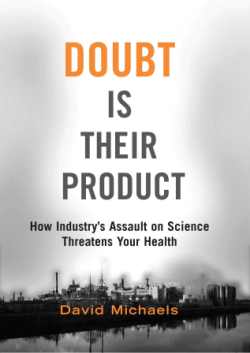
"Doubt is our product," a cigarette executive once observed, "since it is the best means of competing with the 'body of fact' that exists in the minds of the general public. It is also the means of establishing a controversy."
In this eye-opening exposé, David Michaels reveals how the tobacco industry's duplicitous tactics spawned a multimillion dollar industry that is dismantling public health safeguards. Product defense consultants, he argues, have increasingly skewed the scientific literature, manufactured and magnified scientific uncertainty, and influenced policy decisions to the advantage of polluters and the manufacturers of dangerous products. Read more ...











